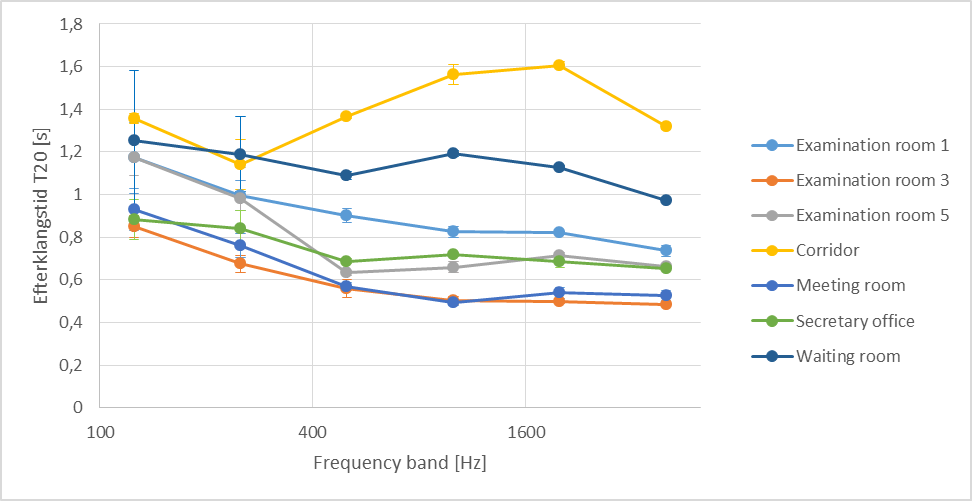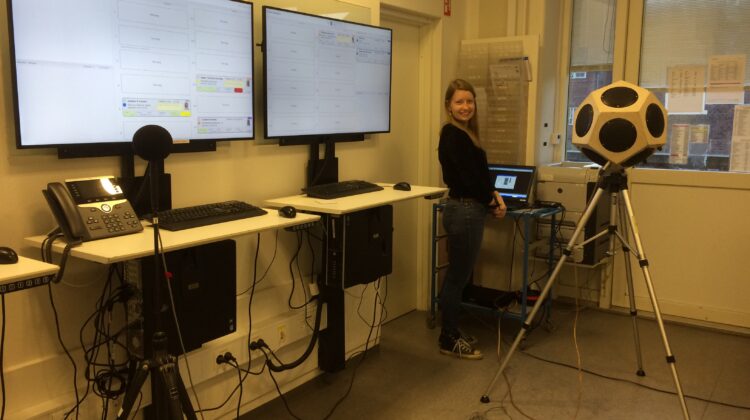
Danish study on healthcare facilities.
Presentation day
Today I had the pleasure of attending a presentation day at DTU (Technical University of Denmark) arranged by the Electro Department under the title: Acoustic Technology & Centre for Acoustic-Mechanical Micro Systems. The speakers were mainly PhD students and Postdocs and the topics varied from ‘Loudspeaker Array Auralisations with the Room Acoustical Simulation Tool PARISM by Gerd Høy Marbjerg to presentations about stage acoustics in concerts halls and research about hearing aids (NB.You can find more about Gerd Høy Marbjerg’s research here).
A well-organized day with great speakers and good discussions.
Poster session
In addition to the formal program, there was also a poster session and it was a pleasure to find Thea Mathilde Larsen’s project among the posters. Find the poster here Poster: Study of room acoustics and noise.
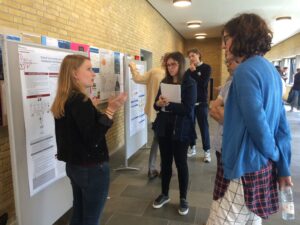
Thea is a master’s student at DTU and for the last six months, she has been investigating the sound environments in greater Copenhagen. In particular, she has been doing room acoustic measurements to investigate the general global trend of hospitals that are getting noisier and noisier. Besides the room acoustic measurements, she has also started a survey among the staff. The intention was to see if there are any correlations between the experienced working environment in regard to sound/noise and the actual room acoustics.
The Danish Building Code
The Danish Building Code (BR15) states a reverberation time of 0.6 sec. in hospital examination and treatment rooms and 0.8 sec. in patient rooms. One of the early conclusions of the study is that these demands alone are not sufficient to ensure good hospital acoustics.
Thea has chosen not only to evaluate reverberation time but also looks into several other acoustic parameters. Speech transmission index (STI), Clarity (C50), Lombard Effect and speech privacy, etc.
Danish study results
The amount of data is enormous (!), below are some of the measurements (Reverberation time/ T20 and Clarity) from one of the hospital departments:
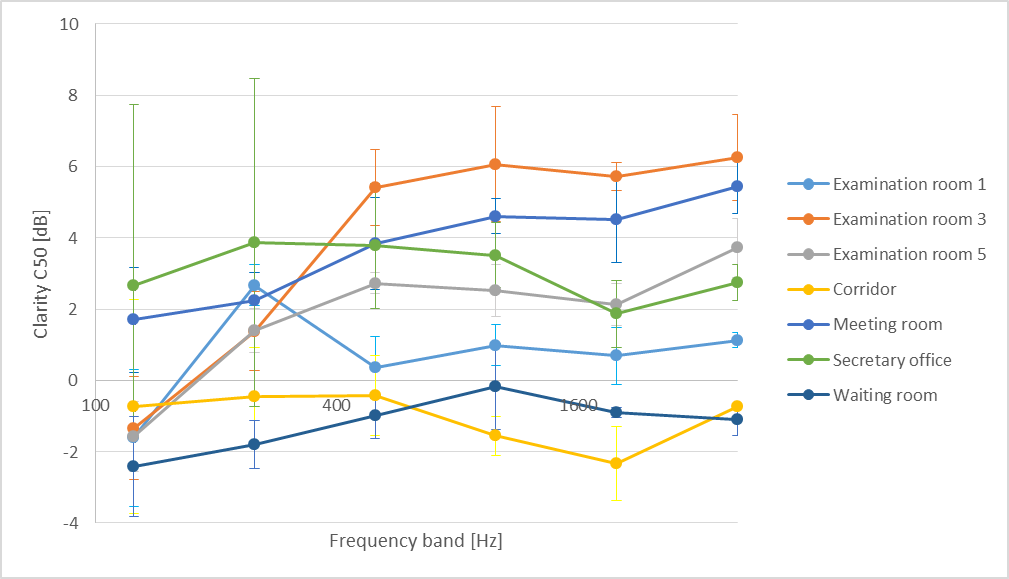
As we can see, not many rooms (or to be brief – not even one) meet the demands in regards to reverberation time according to the Danish Building Code. We see that some of the rooms perform better than others and are close to the demands. The rooms that stand out in a positive way are the meeting room and the examination room 3. These particular rooms have been through an acoustic refurbishment (wall panels – single panels) which can also explain the better values on C50.
Staff say room acoustics are challenging
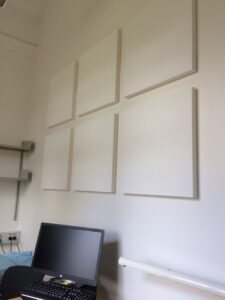
The staff survey shows that the room acoustics in the hospitals are ‘challenging’.
Only 3% of the participants don’t feel disturbed by noise at all. Up to 50% of the participants say that they sometimes find that they cannot hear or understand a patient or colleague due to noise.
You can find more statements and results here Poster: Study of room acoustics and noise. The study is not finished yet – and more data is to be evaluated, but so far the message is quite clear: The hospitals involved in the research study are challenged due to noise and insufficient room acoustics. And even when the rooms are close to meet the building code, the staff is not happy.
More descriptors, please!
It would be interesting – maybe even necessary – to evaluate more acoustic descriptors than just reverberation time in healthcare facilities. In order to secure both a healthy working environment but also an environment where it is possible for the patients to feel a calm atmosphere where recovery is possible. Maybe it will be part of the Danish Building Code in the future.
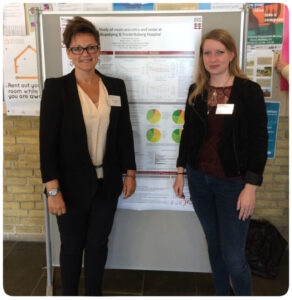
Thank you to Thea Mathilde Larsen for sharing your data, results and great thoughts on hospital acoustics! We are looking forward to your future work.
An update on this project is available here, the study will be extended to newer hospital buildings.

